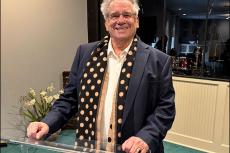“We are in a deep hole, and we are still digging,” United Nations Secretary General Antonio Guterres said on Monday. “Soon it will be too deep to escape.”
Mr. Guterres’s remarks came at Monday’s opening of the United Nations Climate Change Conference in Madrid, a forum aimed at assessing progress since the 2015 Paris Agreement to reduce global greenhouse gas emissions and put- ting the agreements’s goals into effect. As part of that agreement, world leaders set a goal of holding global temperature rise to “well below” 2 degrees Celsius by 2100 while striving to limit warming to 1.5 degrees Celsius.
The secretary general’s opening remarks came on the heels of the U.N.’s annual assessment, known as the Emissions Gap Report, which bluntly states that its findings are “bleak.” The report compares current and estimated future greenhouse gas emissions with the emission levels permissible for the world to progress on a least-cost pathway to achieve the Paris Agreement’s goals.
Among the findings are that greenhouse gas emissions, rather than declining or even cresting, have risen at a rate of 1.5 percent per year in the last decade, stabilizing only briefly between 2014 and 2016, while fossil fuel emissions from energy use and industry grew by 2 percent last year. “There is no sign of GHG emissions peaking in the next few years,” according to the report. “Every year of postponed peaking means that faster and deeper cuts will be required.”
Rather than limiting warming to 1.5 or 2 degrees Celsius, “there is a 66-percent chance that warming will be limited to 3.2 degrees Celsius,” or 5.8 degrees Fahrenheit, under the Paris Agreement signatories’ current commitments, according to the Emissions Gap Report. Nations, the report states, have “collectively failed to stop the growth in global GHG emissions, meaning that deeper and faster cuts are now required.”
Dramatic strengthening of nationally determined contributions, or NDCs, toward emissions reductions is needed at once, the report concludes. “Countries must increase their NDC ambitions threefold” to achieve the goal of limiting warming to 2 degrees Celsius, and more than fivefold to achieve the 1.5 degrees Celsius goal.
The report recommends that the United States regulate power plants, clean energy standards, and carbon pricing to achieve an electricity supply that is 100 percent carbon free, strengthen vehicle and fuel economy standards to be in line with zero emissions for new cars in 2030, and implement clean building standards so that all new buildings are 100 percent electrified by 2030.
“According to the Intergovernmental Panel on Climate Change, we must limit global temperature rise to 1.5 degrees Celsius, reach carbon neutrality by 2050, and reduce greenhouse gas emissions by 45 percent from 2010 levels by 2030,” Mr. Guterres said on Monday. “But let’s be clear. Until now, our efforts to reach these targets have been utterly inadequate.”
He did temper his remarks with an at- eful tone, citing growing realization of the climate crisis, a “remarkable leadership and mobilization” among youth, and cities, financial institutions, and businesses committing to the 1.5-degree goal. “What is lacking,” he said, “is political will” to put a price on carbon, end fossil fuel subsidies, stop building coal power plants, and shift taxation from income to carbon.
Activists on the South Fork lamented that lack of will in reflecting on the report and the secretary-general’s mixture of fear and hope. “America has given up its place as a world leader and problem solver,” said Cate Rogers, chairwoman of the Peconic Region chapter of the Climate Reality Project. “It is up to us to show we want strong leadership in Washington in 2020,” said Ms. Rogers, who is also chairwoman of the East Hampton Town Democratic Committee, “and resume our place as a world leader. We know we must change and we know we can change. The question remains the same. Do we have the will to change?”
“It’s very important to build support for the Energy Innovation and Carbon Dividend Act, even if the chances for final enactment in this Congress are slim,” said John Andrews, a co-leader of the Long Island East chapter of Citizens Climate Lobby, a nonpartisan group that advocates a carbon fee and dividend. The bill, introduced in the House of Representatives in January, would impose a fee on the carbon content of fuels used to emit greenhouse gases into the atmosphere and return it to U.S. citizens and lawful residents.
Most economists, Mr. Andrews said, agree that a fee-and-dividend framework would reduce carbon emissions without damaging the economy. “The more people who understand that, the more likely it will be enacted after 2020.” The group, which will hold its monthly meeting on Saturday at 10:30 a.m. at the Rogers Memorial Library in Southampton, hopes that the boards of the five East End Towns will endorse the bill, he said.
Ms. Rogers, while critical of the “lack of leadership in our federal government, when so much is at risk,” was nonetheless heartened by state and local governments’ aggressive moves on climate policy. “New York State passed the most comprehensive climate legislation in its history this year, and here at home, East Hampton’s leadership is steadfast in its commitment to become 100 percent renewable.”
Gov. Andrew M. Cuomo signed the Climate Leadership and Community Protection Act in July, and the East Hampton Town Board set a goal in 2014 to derive its electricity needs from renewable sources by 2020.
The goal will not be met on that timetable, but, “We have committed and already made progress toward meeting these goals and mandates,” said Gordian Raacke, executive director of Renewable Energy Long Island, who also cited state and local-level commitments to reducing emissions. “We now need to scale up and accelerate the transition to 100 percent clean energy and a zero carbon economy.”
Offshore wind, Mr. Andrews said, “is the only way we can do our part on climate” on a local level. He criticized candidates in East Hampton’s recent political campaigns who highlighted opposition to the proposed South Fork Wind Farm, who “tried to convince us that we should do solar but not wind. That’s stupid for at least a couple of reasons.”
Solar and wind power are not in competition, he said; rather, both should be deployed to the maximum extent possible. “In the recent election the people of East Hampton Town rejected the arguments against the wind farm. It’s time to move forward on offshore wind as our contribution to solving the global climate crisis.”
But this week’s conference comes amid a backdrop of accelerating climate change, which is predicted to substantially impact the South Fork. “Seas are warming and rising faster, putting more cities at risk of tidal flooding or worse,” The New York Times reported yesterday. “Glaciers are melting at a pace many researchers did not expect for decades.”
Five months after taking office, President Trump announced the United States’ withdrawal from the Paris Agreement. “Speaking for myself only,” Mr. Andrews said, “we need to do all we can to elect candidates who will pursue climate action and defeat those who oppose it.”



